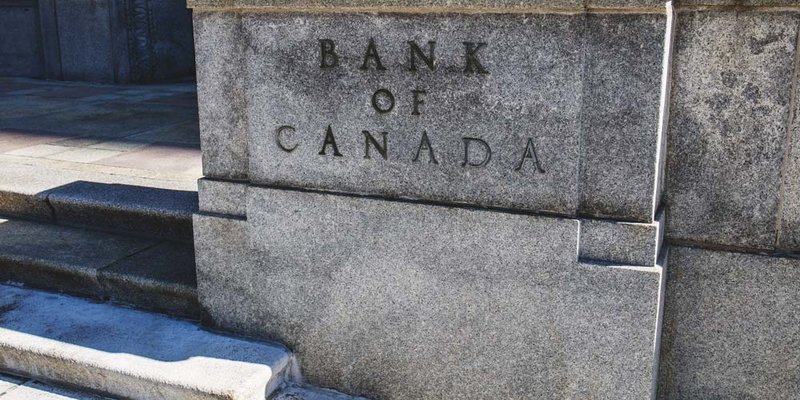
If you are not redirected within 30 seconds, please click here to continue.
Samedi: 10h – 16h HAE

If you are not redirected within 30 seconds, please click here to continue.
If you are not redirected within 30 seconds, please click here to continue.
No Change in Overnight Lending Rate: Bank of Canada Announcement

As expected, the Bank of Canada has decided to keep the overnight lending rate at 0.5% following its low-key announcement Wednesday morning. Governor Stephen Poloz kept fanfare to a minimum, with no press conference to accompany the paper and online release. The key rate has remained unchanged since July 2015. The bank rate remains at ¾ percent, and the deposit rate at ¼ percent.
The reason for keeping things the same comes down to one major factor: The Canadian economy shrank 1.6% in the second quarter – the poorest quarterly performance since the recession in 2009. This was considerably worse than the 1% contraction that the Bank had previously forecasted and the 1.5% drop predicted by private-sector economists.
So What’s Behind Keeping the Rate at 0.5%?
While the economy grew by 2.4% in this year’s first quarter, the impact of the spring’s wildfires in Fort McMurray are still at play in the second quarter. More recently, July’s job figures show we lost 31,000 jobs that month.
There are also uncertainties when it comes to Toronto’s and Vancouver’s overheated housing markets. Vancouver’s growth plummeted to a four-year low in August following the implementation of the 15% foreign buyer tax. Some economists see this as a driving factor for Toronto’s still-scorching market to get even hotter. The bank says there are also financial vulnerabilities associated with household imbalances.
And South of the Border …
It’s a mixed picture stateside. While the US economy was weaker than expected in the second quarter and the most recent job figures missed expectations, rising wages and an improving employment picture overall have experts forecasting sustained economic improvement. On the other hand, the Bank of Canada says the outlook for business investment in the US has become less certain.
All in all, though, the economic picture south of the border appears to be stronger than here in Canada, pointing to a strong possibility of an interest rate hike in the US in the medium term – once the dust settles following the presidential election.
On a global scale, growth was slower in the first half of 2016 than our central Bank anticipated. No one is entirely sure what the future holds as other global powerhouses are still dealing with potential negative forces – Brexit in the U.K. being one of the best examples.
What This Means for Your Mortgage
No movement in the overnight rate means there won’t be much change when it comes to securing or renewing a mortgage for your home. As our RATESDOTCA panelists predicted in September’s Mortgage Rate Outlook Panel, there’s not much movement in the bond market – the factor that influences your fixed rate mortgage. In fact, there isn’t much pressure for that pattern to change. Should the cooling of the housing markets spread outside of Vancouver, this will moderate any upward movement.
The same goes for variable rate mortgages – which tie back to the overnight rate. These products will remain at low rates and record demand is likely to continue. And while the aforementioned foreign buyer tax in Vancouver is cooling the housing market on the west side of the country, there’s no signs yet of a slowdown in Toronto. Unless Ontario also implements a foreign buyer tax – and there’s no signs of this happening at the current time – then an eventual rate hike might be the only mitigating factor in the country’s largest city.
If you’re currently house hunting and are working to secure a mortgage, then it’s just another day following this latest Bank of Canada announcement. As always, it’s best to shop around and look for a rate – whether fixed or variable – that best fits you and your needs. And if your mortgage is up for renewal, it’s also a good idea to examine your options and see if you could be paying less interest.
As for the Future …
Going forward, we will have a better indicator of how the second half of 2016 will shape up when job figures for August are released on Friday, September 9th. The next GDP announcement at the end of the month will also shed more light on whether or not we’re heading into greener pastures.
The Bank of Canada does expect a rebound in the third quarter as oil production recovers in Alberta and consumer spending gets a boost from Canadian Child Benefit payments. The Bank also cites federal infrastructure spending to have a positive influence. There’s some thought that July’s general economic figures will be somewhat lower than anticipated; even so, the Bank is predicting above-potential fourth-quarter growth. But as to whether or not we can expect a rate cut or a hike before the end of the year, we’ll just have to wait and see.
The next Bank of Canada interest rate announcement and full economic and inflation outlook will be published on October 19, 2016. Read today’s full report here.
Get money-saving tips in your inbox.
Stay on top of personal finance tips from our money experts!








